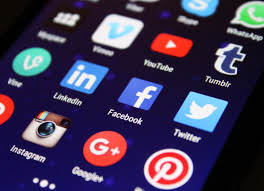Since the Black Lives Matter protests in June 2020, Twitter has been adding labels to Donald Trump’s tweets to warn people of false information; when Trump tweeted that he had won the election, Twitter added a warning on his tweet that stated “This claim about election fraud has been disputed”. On January 6, 2021, when the Capitol insurrection occurred, Twitter put a 12-hour ban on Trump’s Twitter account. Finally, on January 8, 2021, Twitter decided to permanently suspend Trump’s account, citing that the suspension was “due to the risk of further incitement of violence.”
Twitter wasn’t the only platform to take action. Facebook and Instagram suspended Donald Trump for 24 hours on January 6 after he posted the infamous video of him telling the people invading the Capitol “we love you, you’re very special.” The following day, Mark Zuckerburg announced that Trump’s ban had been extended indefinitely. Other social media platforms and services that similarly banned Trump and organizations and groups affiliated with Trump include Youtube, Amazon Web Services (which removed Parler, a right-wing social networking service, from its services) Snapchat, Reddit, Twitch, Shopify, and Discord. Even Pinterest announced that Trump would be banned from its platform.
For some, these decisions sparked outrage as Trump supporters claimed that banning Trump was considered censorship. These people believe that the ban infringes upon the First Amendment by limiting freedom of speech, that social media platforms do not have the power to ban Trump, and that the government should ultimately have the power to decide whether or not he should be banned. While the First Amendment guarantees freedom of speech, it only applies to government behavior and doesn’t apply to private companies like Twitter and Facebook. Therefore, the removal of Parler from the Internet is allowed under the First Amendment.
On the other hand, some were relieved about the ban but upset that it had taken months for social media platforms to make a move. Many point to the fact that Trump will soon be out of office as a reason for the social media platforms to make the decision to ban him. Additionally, people seem disappointed that it took social media platforms years to realize that Trump having access to social media gave him the ability to spread misinformation and make threats that could have jeopardized the U.S.
Ultimately, Trump’s ban has revealed how social media can be used as both a weapon and a tool and serves as a warning about the power of social media. Additionally, it shows that the tech companies hold the potential to control the flow of information (and misinformation), and Trump’s social media ban has shed light on the responsibility of tech companies have on our daily lives.

